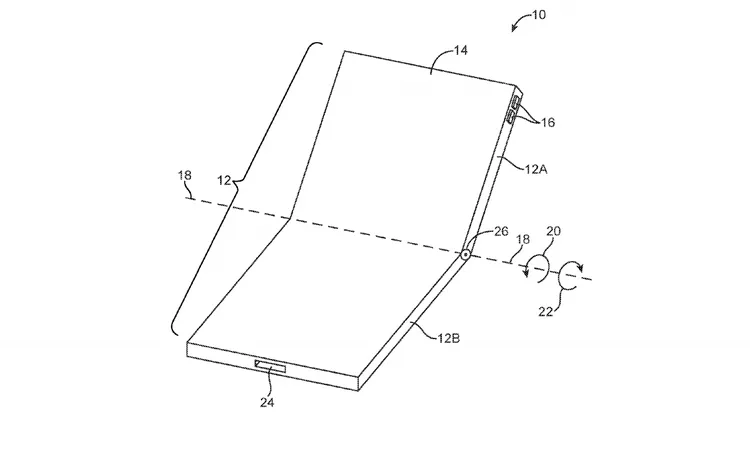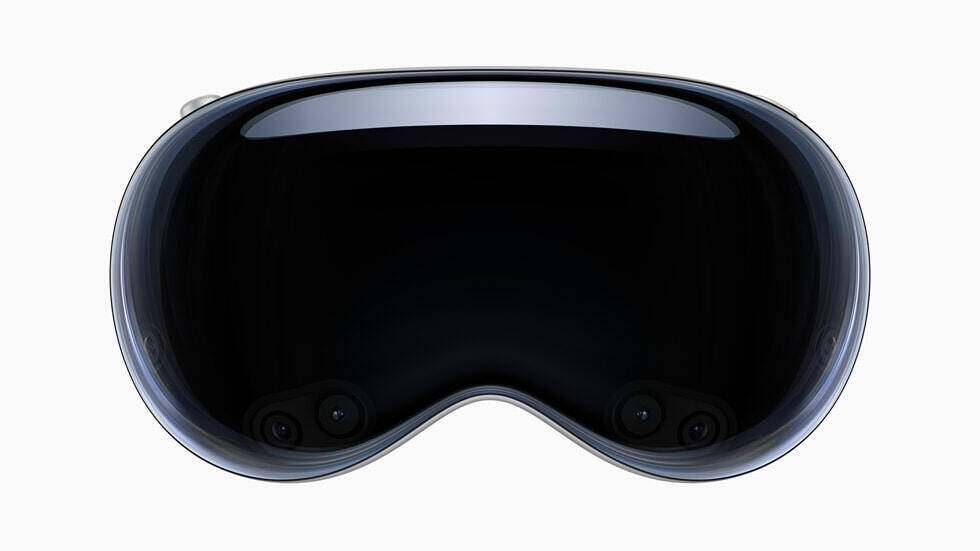Few technology companies have the sway that Apple possesses, having the largest smartphone market share worldwide in 4Q 2022. With such substantial influence comes substantial attention from industry players, technology enthusiasts, and other stakeholders. From a new iPhone release to years of Extended Reality (XR) development, every move Apple makes is closely monitored because the company’s products are often forward-looking and set new trends in consumer devices. Here are some of the tech products that will define Apple's near to medium-term future.
Upcoming iPhone Launches
Apple’s next flagship device is the iPhone 15, with the company expected to take pre-orders in September 2023. One of the most notable changes rumored with the iPhone 15 is an “Ultra” version expected to replace the “Max Pro” version. While the body design of the iPhone won’t diverge from previous models, the notch will possibly be removed in exchange for the Dynamic Island “pill-and-hole” cutout. There are also reports that Apple’s iPhone 15 Pro model might support haptic feedback for power buttons and sport solid-state volume. Another interesting feature of the iPhone 15 is the inclusion of a camera with “periscope” telephoto lens technology. This new camera, expected only to be used for the iPhone 15 Pro and beyond models, will allow users to zoom beyond the current 3X zoom.
Looking past 2023 and into the fall of 2024, there are already reports of the iPhone 16 using an Apple-designed modem chip instead of using Qualcomm’s 5G modem chips. Moreover, the smartphone should have updated biometric face ID technology and camera upgrades. While hard facts are scarce, industry consensus is that the iPhone 16 Pro and Pro Max models will have 2.5% larger screen display sizes (6.3 inches and 6.9 inches, respectively).
Other smartphone devices that are integral to Apple’s future business plans include the budget-friendly iPhone SE 4 and the Apple iPhone Flip/Fold. The former will be the next entry-level Apple smartphone with smaller storage capacities slated for a 2024/2025 release. The iPhone SE 4 will likely opt to feature an all-display screen similar to the iPhone XR instead of using a home button. Screen specs for the fourth-generation SE model are suggested to be robust, with 5.7-inch or 6.1-inch Organic Light Emitting Diode (OLED) display options with an adaptive 120 Hertz (Hz) refresh rate. This shows that these features, once reserved for top-tier models, are becoming mainstream.
Meanwhile, foldable screens are a staple of the future smartphone market, with Apple developing a foldable/flippable phone not unlike the Samsung Galaxy Z Fold 4. While Apple may currently be working on two different foldable phone designs, it’s possible that the company will stick with just one when it launches in the rumored 2025 release window. The screen size is expected to be rather large, with Apple testing foldable phone displays between 7.3 inches and 9 inches. Finally, rumors exist that the iPhone Flip may have two separate displays connected by a central hinge. A larger Fold device will allow users to see their notifications on one edge due to a design whereby a part of the screen is longer than the other.
Figure 1: Apple’s New Foldable Patent Technology Design Concept

Apple’s Laptop and Tablet Plans
New iterations of current laptop and tablet models are another integral aspect of Apple's product planning. In this regard, Apple is reportedly still planning to launch a 5G MacBook within the 2024/2025 time frame. What the rumor mill tells us is that Apple is waiting until it has its own 5G silicon and wants to wait until demand for an always-connected laptop is higher. It’s been suggested that the 5G MacBook Air and MacBook Pro will be very high-end, using a ceramic antenna board to improve performance. However, a premium price will likely be put on these next-gen laptops, with ceramic antenna boards alone costing 6X more than typical metal antenna boards. For 5G hardware specs, Apple will leverage its proprietary Arm-based M processor, alongside Qualcomm modems for 5G connectivity. Other features expected with the tech giant’s next laptop model include the possible return of a Secure Digital (SD) card slot, the eradication of the Touch Bar, MagSafe charging, and face ID user authentication.
Apple is also reportedly developing a 5G iPad Pro and iPad Mini, both of which will have updated features like reduced bezel sizes. These upcoming devices are anticipated to be released in late 2023 or possibly in 2024. Memory sizes are expected to be the same as usual, but there is a possibility that the 128 GB variant could be scrapped. In all likelihood, Apple will offer 14-inch and 16-inch versions of the updated iPads. Price points for the new iPads will be more expensive than current models, especially if ProMotion (120 Hz refresh rate) is supported.
Vision Pro Marks the Beginning of Apple’s XR Journey
Extended Reality (XR) is another cornerstone of Apple’s future, with the company seeing spatial computing as the next generation of computing. After years of speculation, Apple finally unveiled its first XR device on June 5th called Apple Vision Pro. Dubbed the “world’s first spatial computer,” Apple Vision Pro will allow users to interact with digital content applications in both enterprise and consumer contexts.
Slated for a 2024 release, Vision Pro will come with some impressive features and a best-in-class design for a Virtual Reality (VR) headset. This feature-complete XR device will support:
- High-resolution screens
- Proprietary optics
- Eye tracking
- Gesture input
- Three-Dimensional (3D) cameras
- Two Apple silicon chips
- Spatial audio support
- Siri voice control
- Digital content lighting/shadowing/occlusion
- Support from Disney, the National Basketball Association (NBA), Marvel, and other marquee content creators
Moreover, the patent suggests Apple aims for 6 Degrees of Freedom (6DOF) tracking, which provides a superior user experience. Given all these exciting features, Vision Pro will come with a higher-than-average price tag of US$3,499 at launch. As my colleagues Eric Abbruzzese and Michael Inouye state, Apple Vision Pro targets the high-end customer. This could potentially hinder Apple’s XR sales potential, positioning this device towards developers first to build up the immersive ecosystem. Secondly, Vision Pro will target enterprises that are already purchasing headsets like Microsoft’s HoloLens 2, Magic Leap 2, or Varjo’s devices, which carry prices above $3,000.
The consumer angle received significant attention in the launch presentation of Vision Pro. While the spatial computing angle allows Apple (and its users) to leverage content and services they already have, Inouye believes "the price point will likely keep this first-generation device (with respect to the consumer market) confined to the most high-end users in the near term." This customer base encompasses avid Apple consumers and those individuals or households who would benefit from substituting this one device for multiple device purchases (e.g., home theater, computer with multiple monitors, game console, laptop, streaming media device). For example, someone who is looking to outfit a small new apartment might find Vision Pro appealing to consolidate all in-home entertainment into one technology medium.
For a price comparison, the most successful VR Head-Mounted Display (HMD) to date is Meta’s Quest 2, which starts at $300, with the upcoming next-generation Quest 3 starting at $500. Meanwhile, Sony’s PSVR 2 is priced at $550, and even pairing it with the required PS5 console ($400 - $500) is still well below Apple’s $3500 price point for Vision Pro.
Figure 2: Apple Vision Pro Headset

Nevertheless, Abbruzzese envisions Vision Pro to be the most unified XR ecosystem next year, with enormous content support behind it. Further, as a relief to the broader market, Apple’s sway will help eradicate the stigma associated with VR content.
Apple hasn’t released a new device type in years, which has diminished the firm’s image as an innovator. Now tapping into the XR world, Apple’s fate may not be tied to its sales performance with the first generation Vision Pro, but how it takes what it learns with this device to bring more broadly appealing future XR devices to market.
Keep Track of Apple’s Upcoming Developments
Apple is one of the most dominant companies in the consumer technologies space, and this fact will still ring true for some time. Not only does Apple help fuel growth in the smartphones, smartwatches (a possible 5G Reduced Capability (RedCap)-supported smartwatch around the year 2027), tablets, and laptops spaces, but now the company plays a key role in XR innovation. ABI Research will continue to keep tabs on the latest product developments for Apple, as well as provide insight into its planned vision. If your organization needs this kind of information, extending to Samsung, Motorola, Xiaomi, Google, and other similar firms, subscribe to our 5G Devices, Smartphones & Wearables Research Service.
Related Content:
- Future 5G Mobile Devices: Reported Features and Functionality, 2Q 2023 [Presentation Slides]
- 5G Mobile Devices, Features, and Technologies: Vendors, Trends, and Forecasts [Market Data]
- Global Smartphone Market Recap: Forecasts, Updates, And Vendor Performances [Whitepaper]
- It’s Finally Real(ity): Apple’s Vision Pro XR Hardware Reveal Elicits Mixed Excitement and Confusion [Insight]





